William & Mary Asian Centennial Art Projects









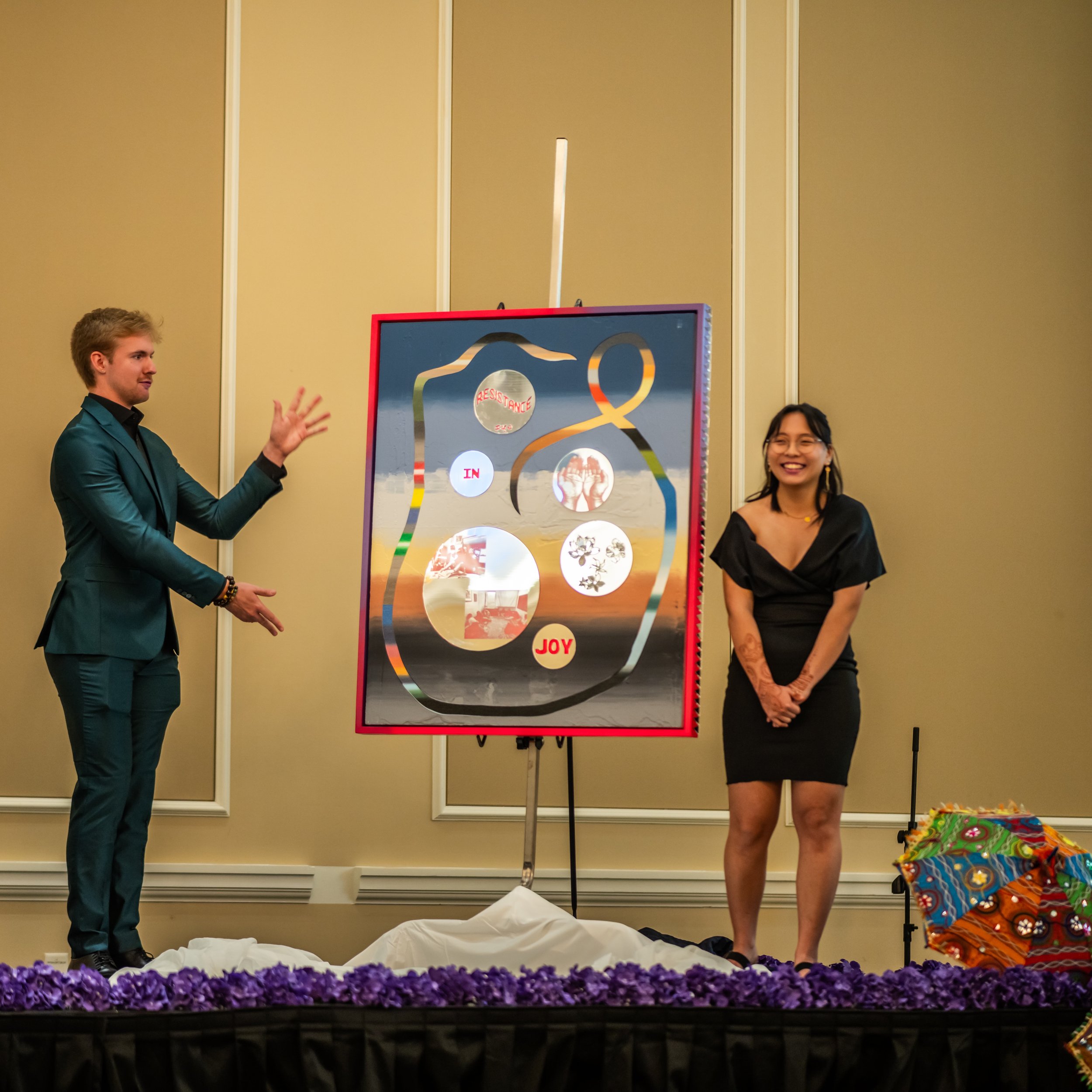
Joy on the margins, joy when we’re centered
46 x 38 inches. Acrylic, pumice medium, laser cut mirrors, and spray paint on canvas over panel with a painted pine floater frame. 2024.
Thank you to my William & Mary Asian & Pacific Islander American Studies students Collin Absher, Diana Kim, and Asian American Student Initiative for inviting me to create and present this piece at the Art & Hatsuye Ball on April 5, 2024. Happy to announce that this piece will be living at the W&M APIA-AMES library. The laser cut mirrors read “RESISTANCE IN JOY” with the Tagalog word Kapwa (shared identity or togetherness) inscribed in the Tagalog pre-colonial writing, baybayin, under the word resistance. The flowers of the W&M Asian Centennial (jasmine, hibiscus, and lotus), an image of me and Prof. Francis Tanglao-Aguas silkscreen printing, and an image of Dr. Lisa Lowe kickin’ it with our students in the APIA-AMES library are laser cut into several round mirrors. Triangle mirrors line the frame of the piece. An image of open hands is a reminder to be vulnerable, open, and generous as we invite folks into a vision of a better day.
Ultimately, this piece is about love and liberation, it is about how we are more than our pain. Although it’s hard to practice happiness during this time of Palestinian genocide, the uncertainty, and the hellscape this world has become and has kinda always been. The forces of domination want the people of the Global South to be dying instead of thriving. The feelings of joy and togetherness are tiny but important triumphs that make the bigger actions possible.
Photo credit for the last two images: Zachary Lutzky
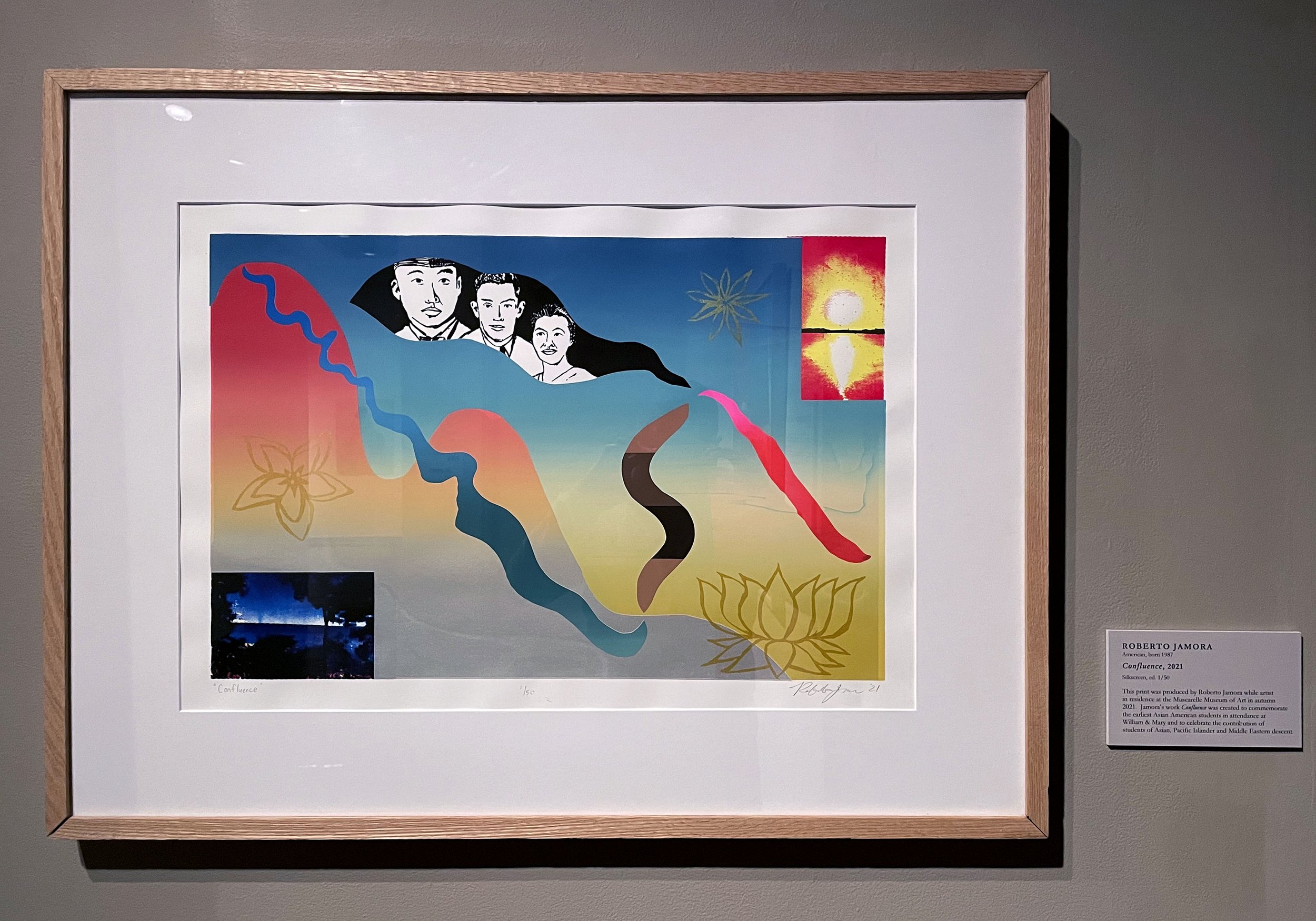
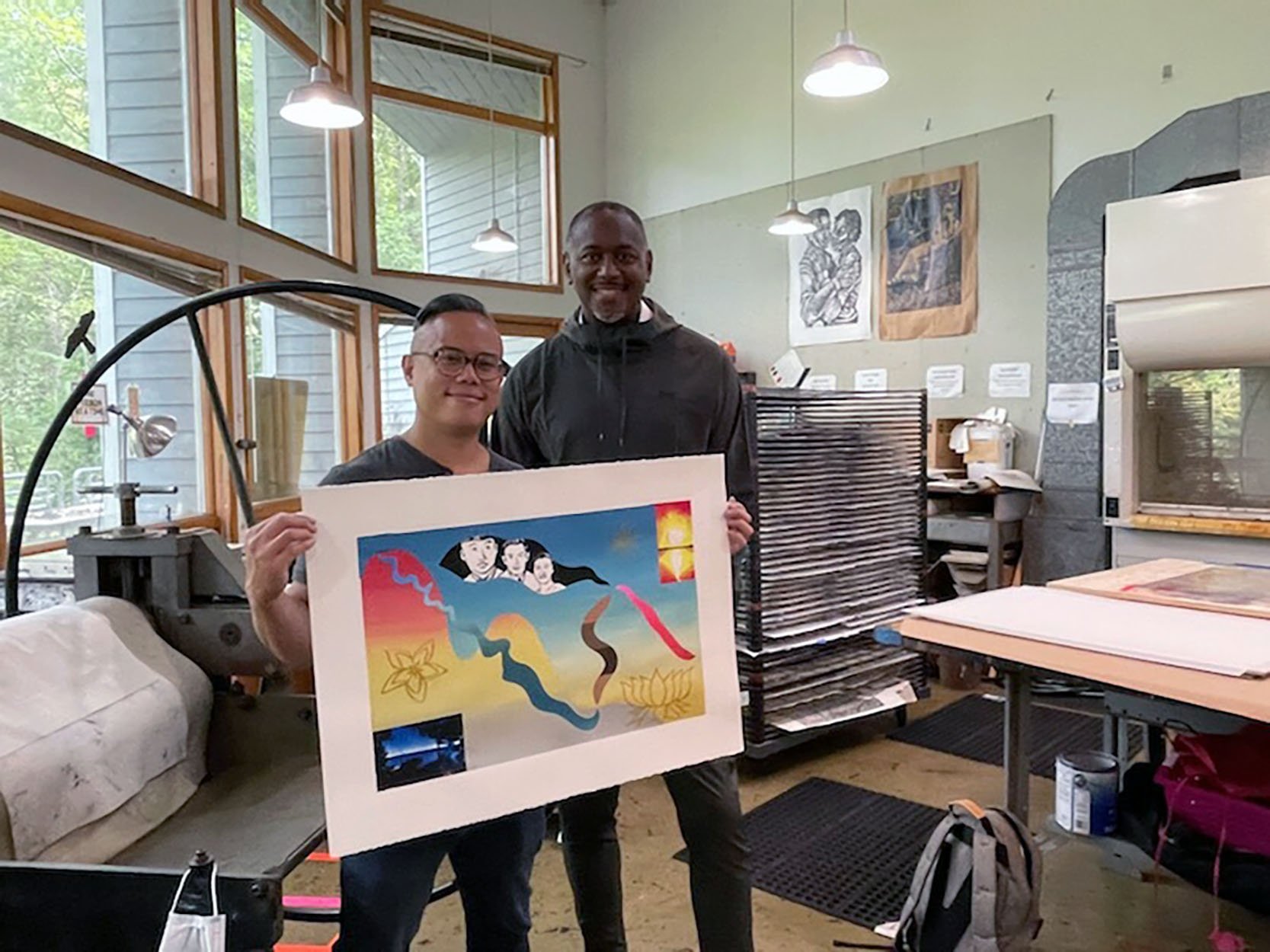

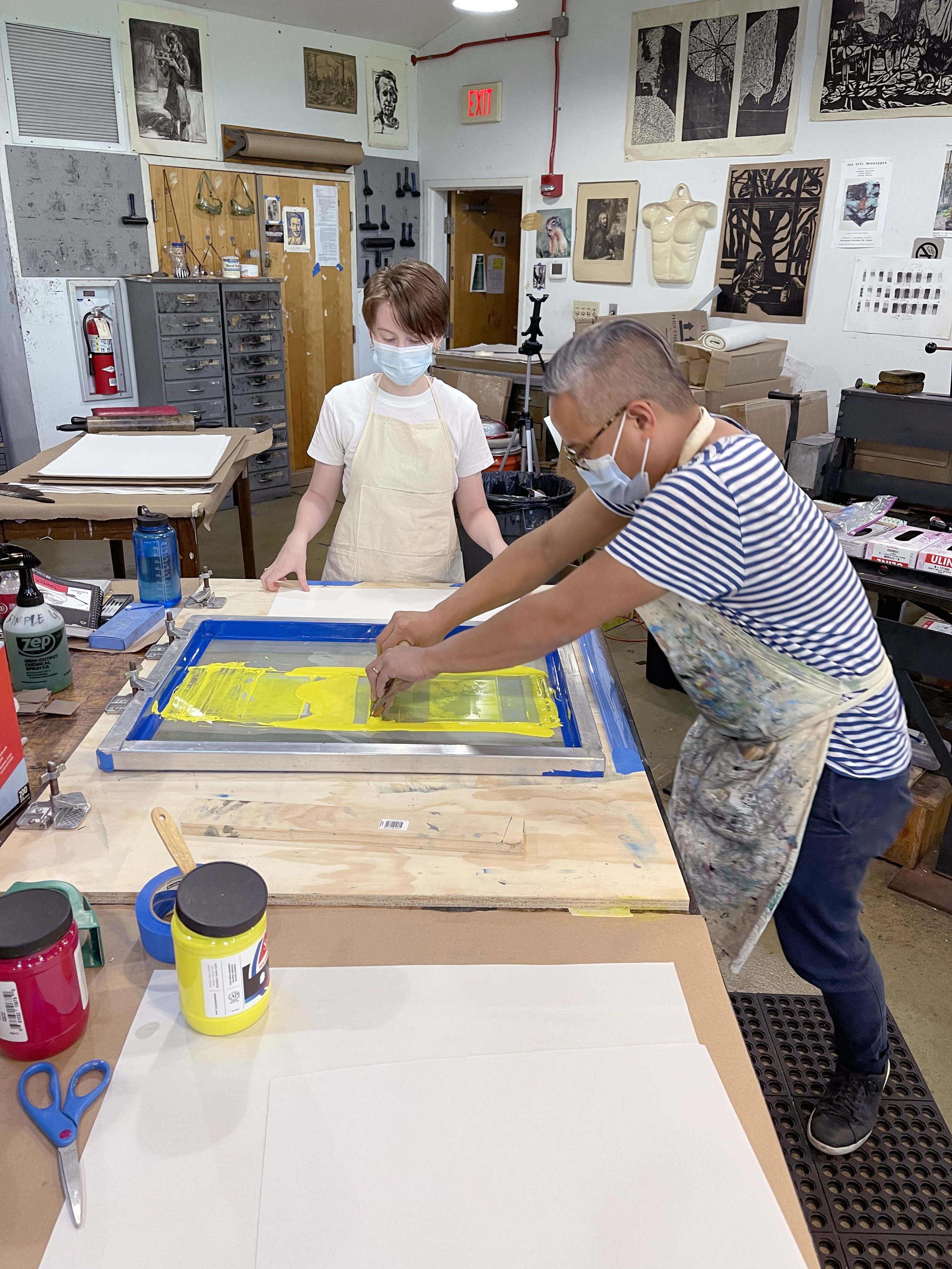
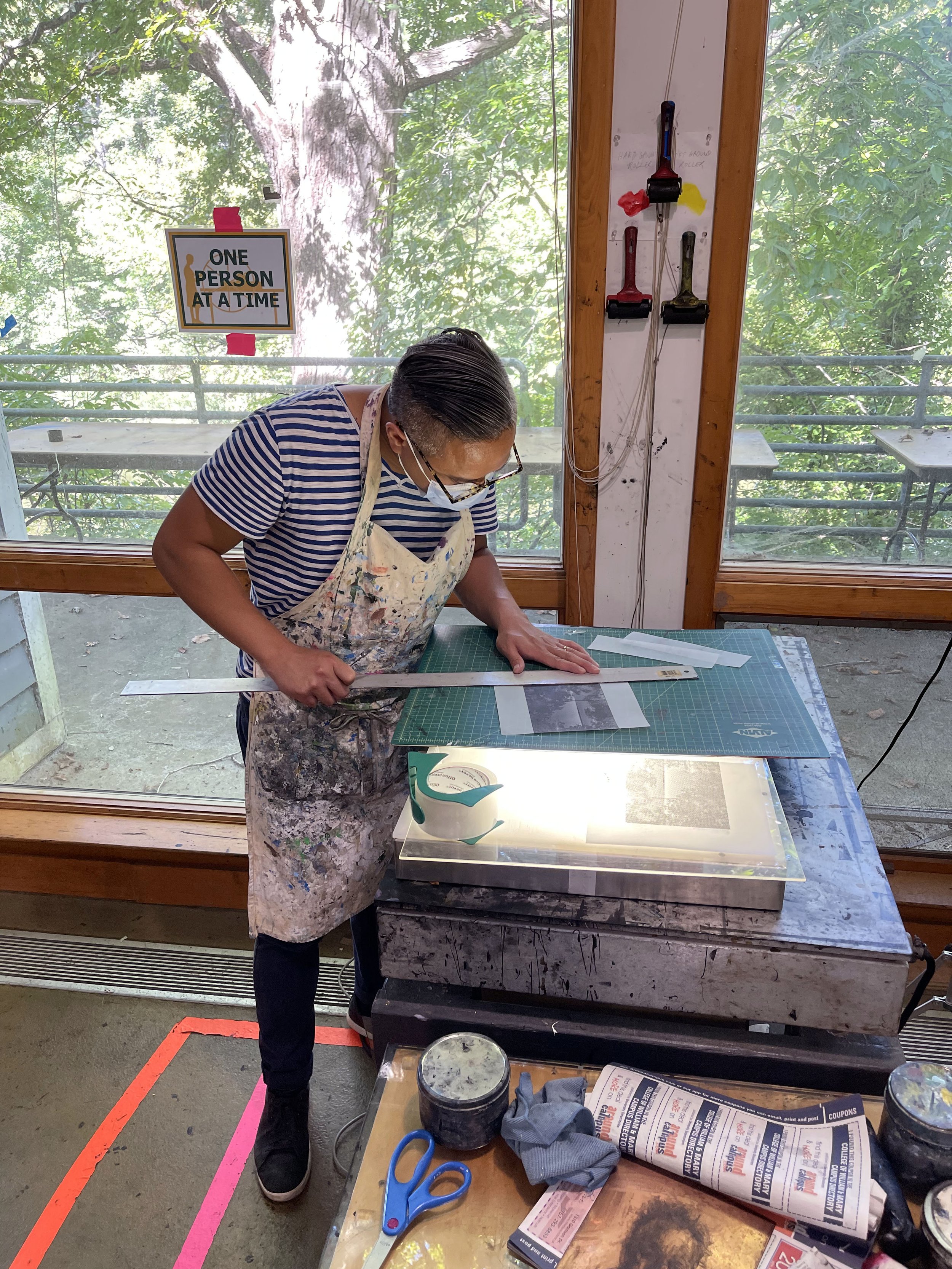
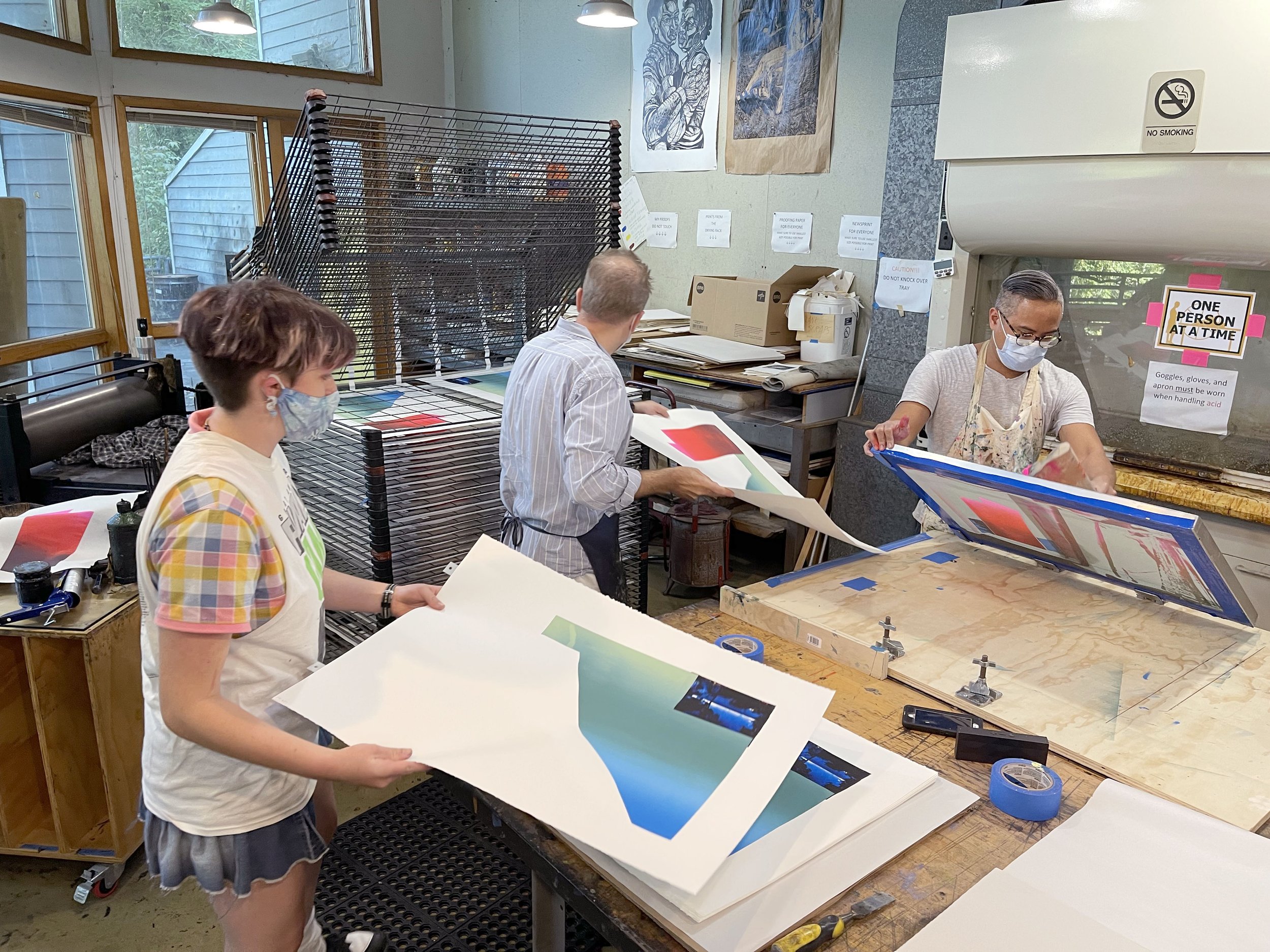
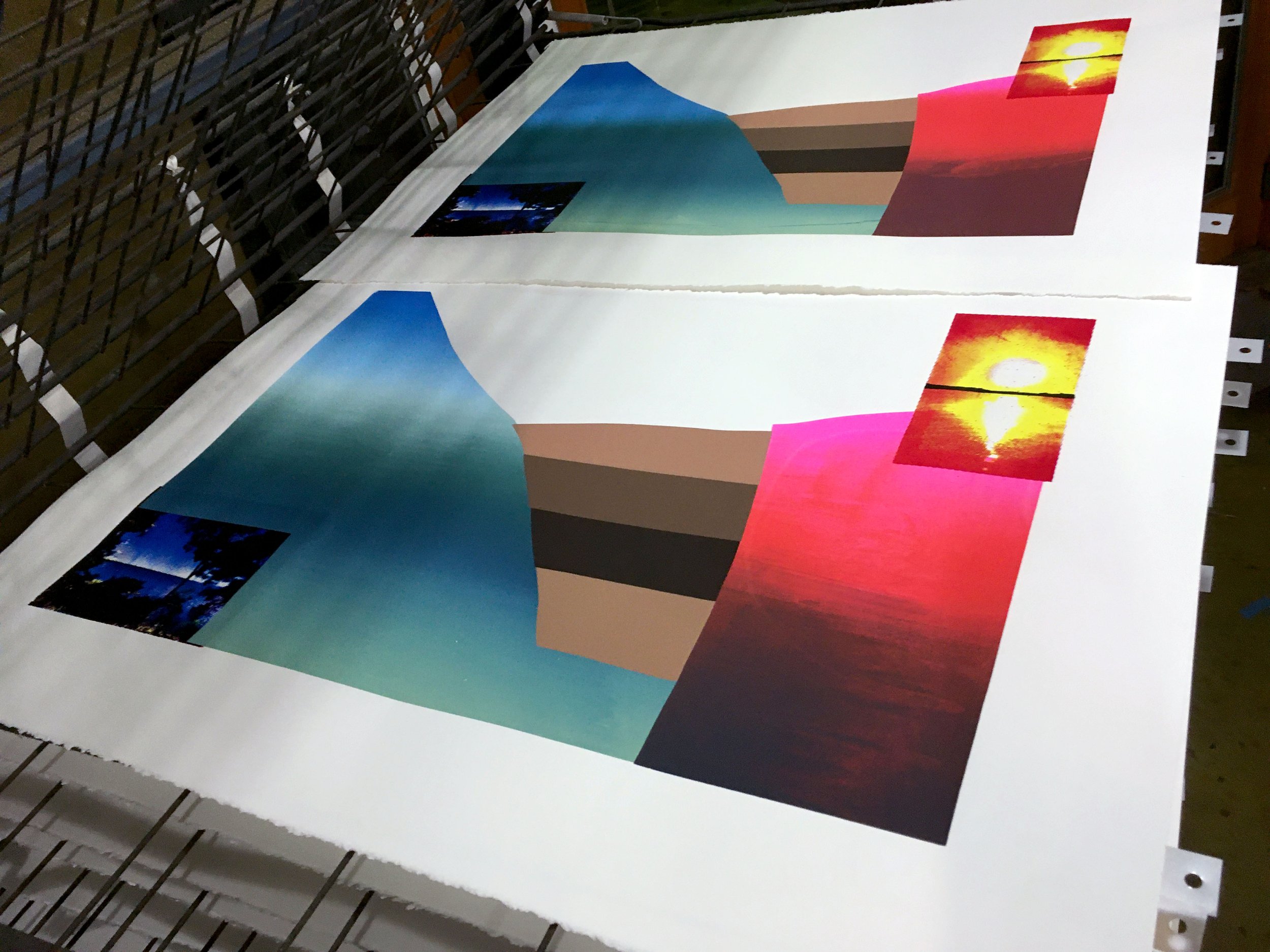
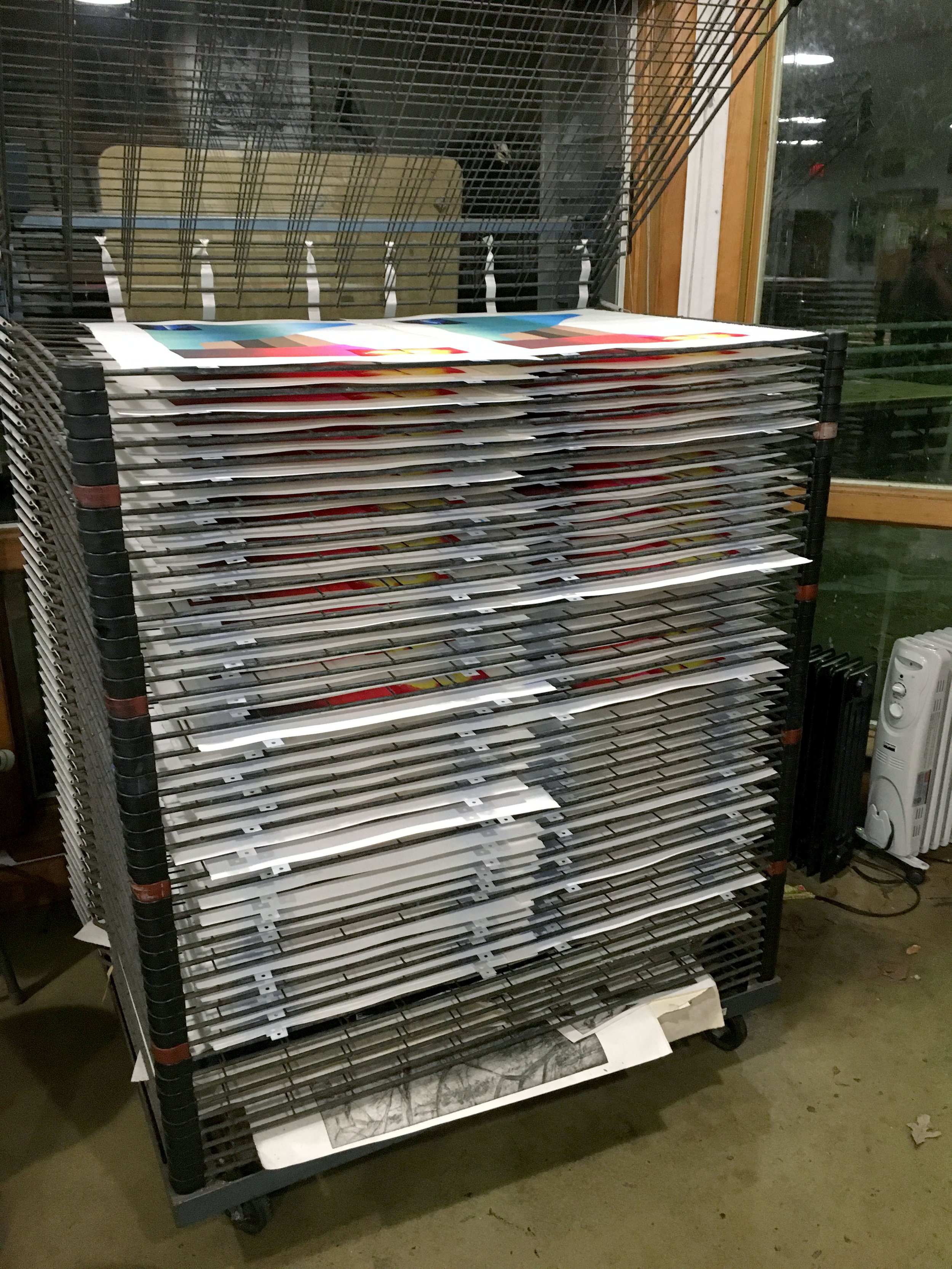

Confluence
22 x 30 inches, 17-layer silkscreen print on inch Stonehenge paper, edition of 50, 2021
Printed at Matoaka Art Studio at William & Mary with assistance/collaboration by Muscarelle Museum of Art, Director of Engagement and Distinguished Artist-in-Residence, Steve Prince and the Art Department at W&M. The print features photos of the James River at dusk and the York River at dawn. Two of the four incisions are the shapes of the James and York Rivers. One of the incisions includes skin tones of Roberto Jamora, W&M Filipino art student Miles Piontek, Steve Prince, and Professor Francis Tanglao-Aguas. The incision near the top of the print includes illustrations of three of some the earliest Asian students at W&M: Chen Pu-Kao, Art Matsu, and Hatsuye Yamasaki. Contour line drawings of the three flowers (lotus, hibiscus, and jasmine) of the Asian Centennial are printed in gold ink to allude to different geographical areas of Asia, Pacific Islands, and Middle East
Muscarelle Museum of Art at William & Mary acquired print 1/50, October 2021
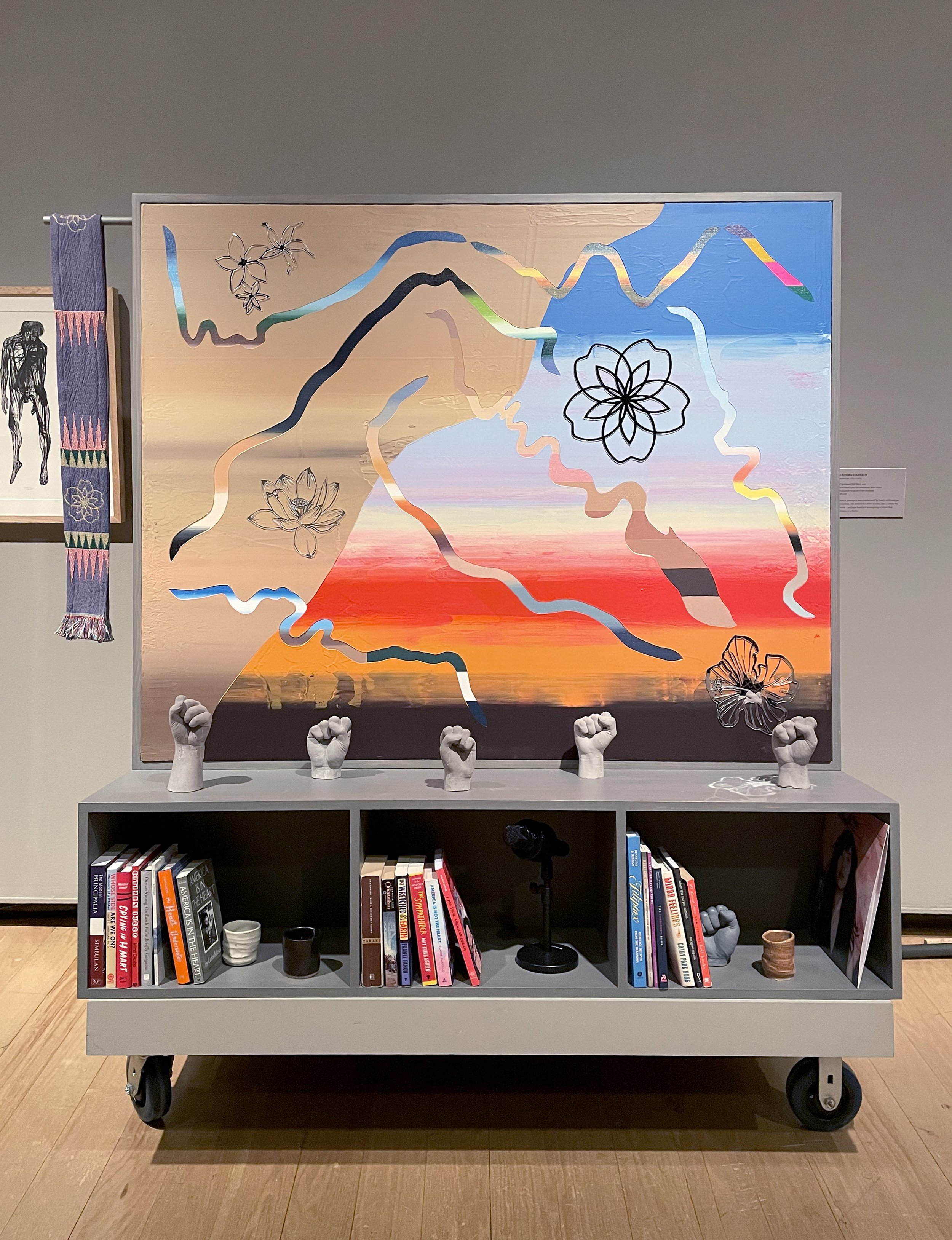
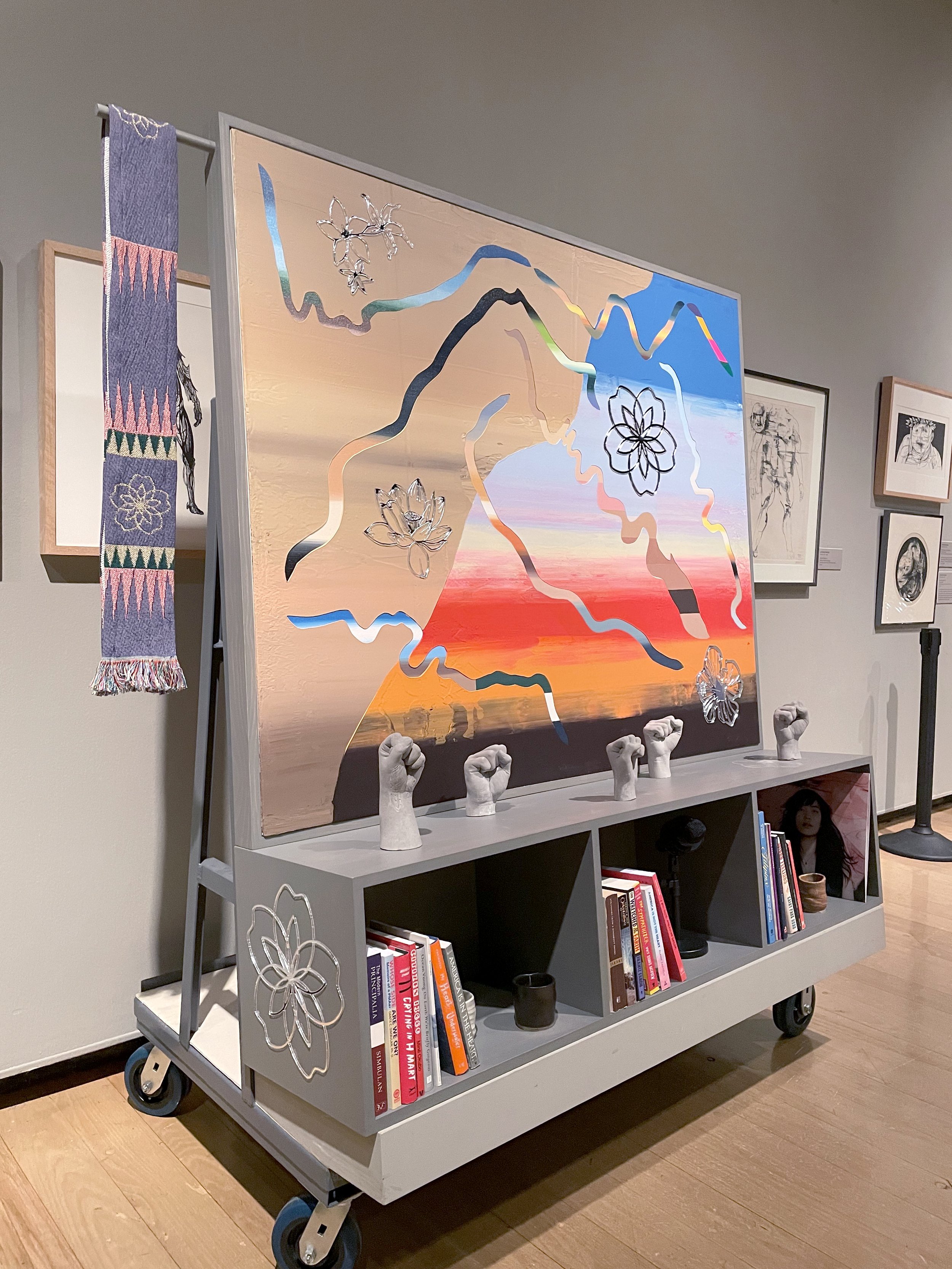
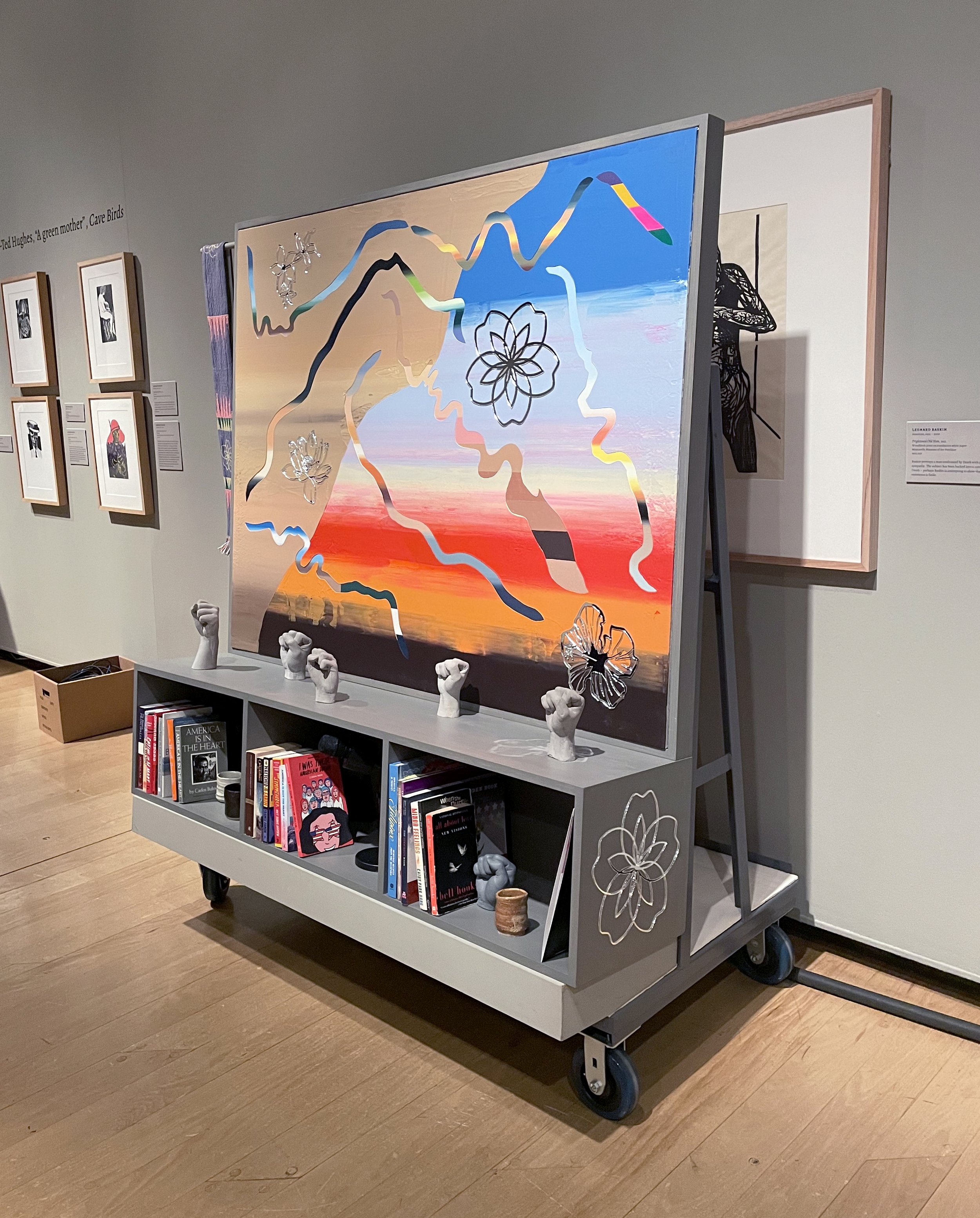
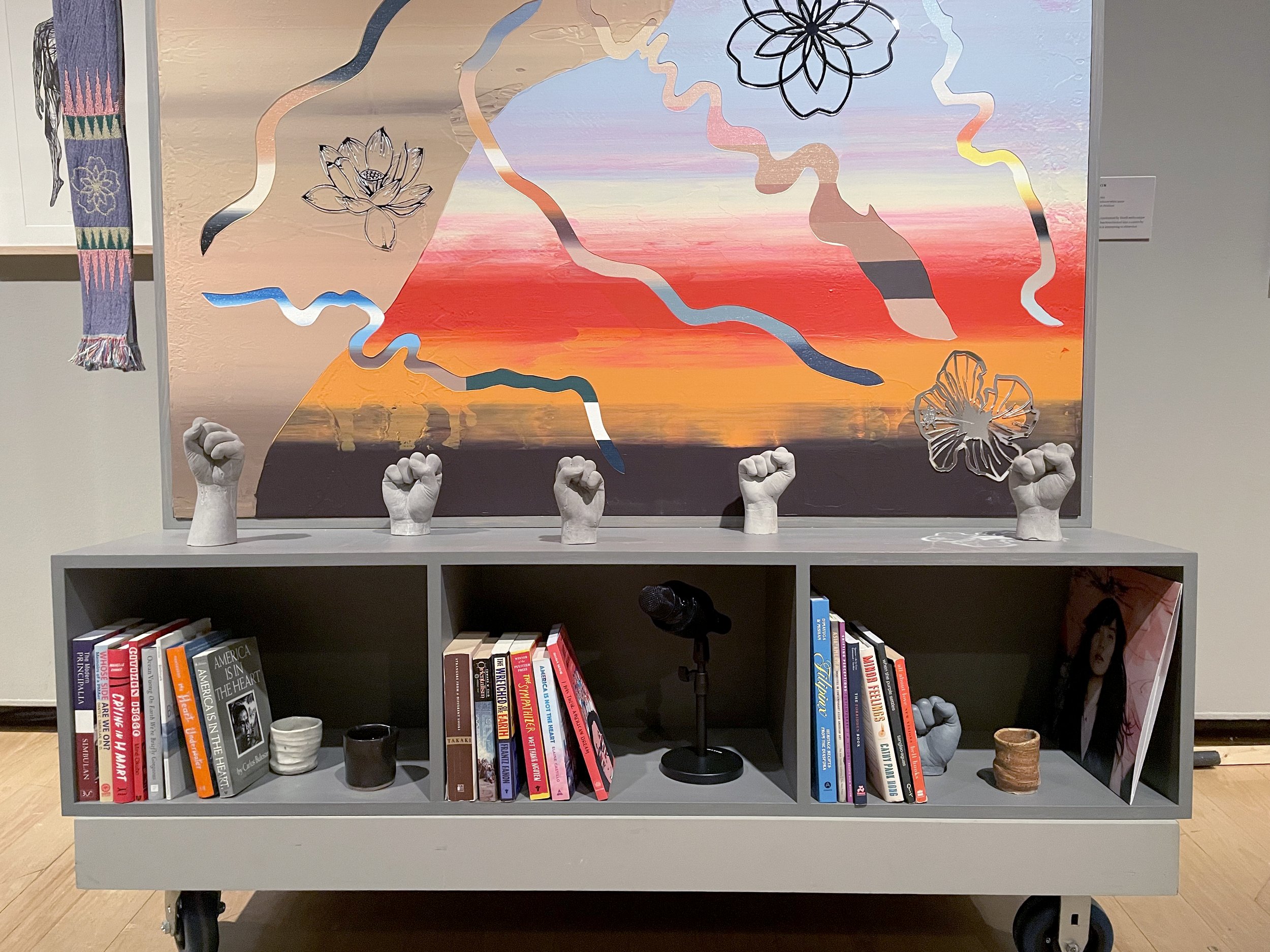
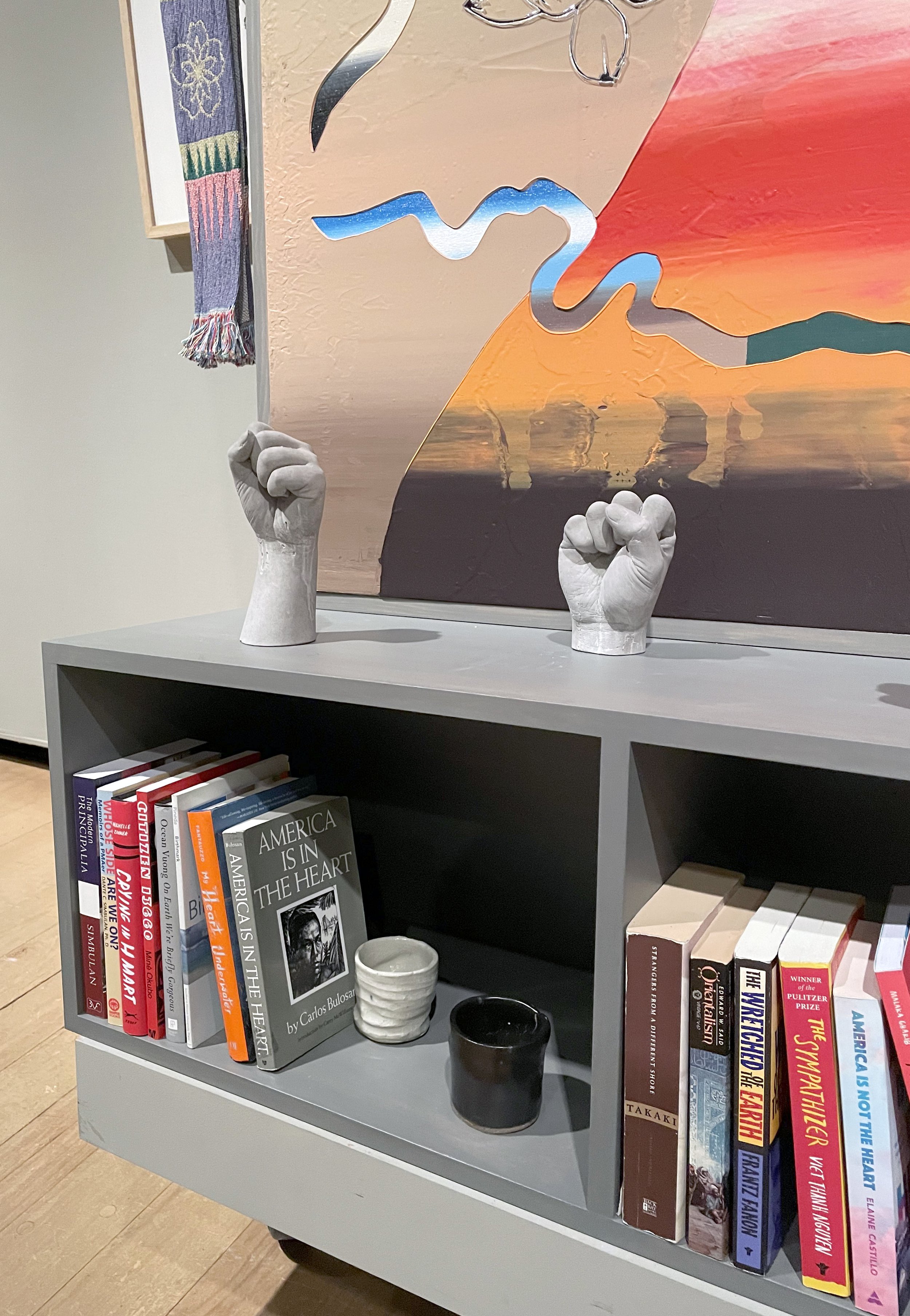
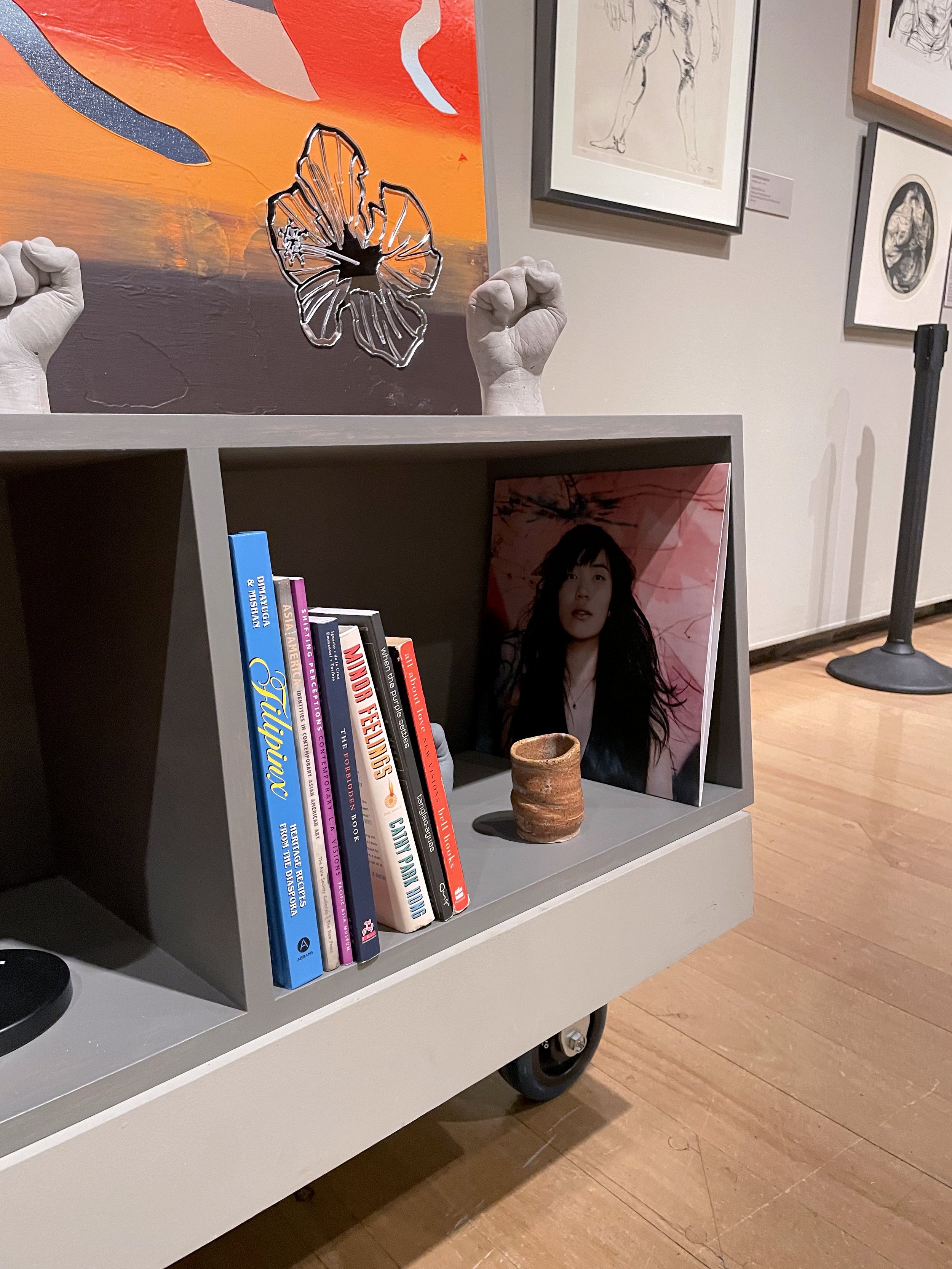
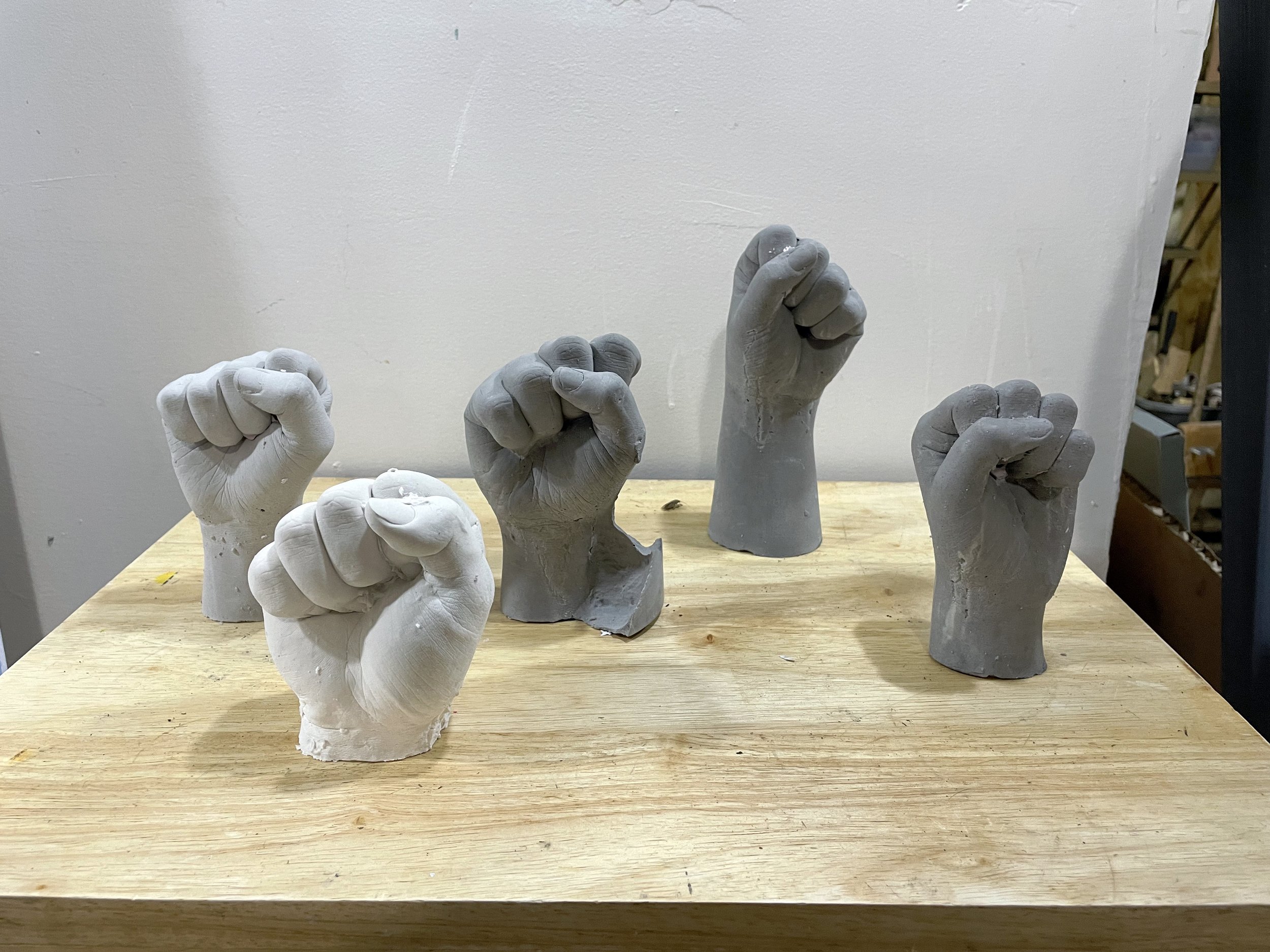
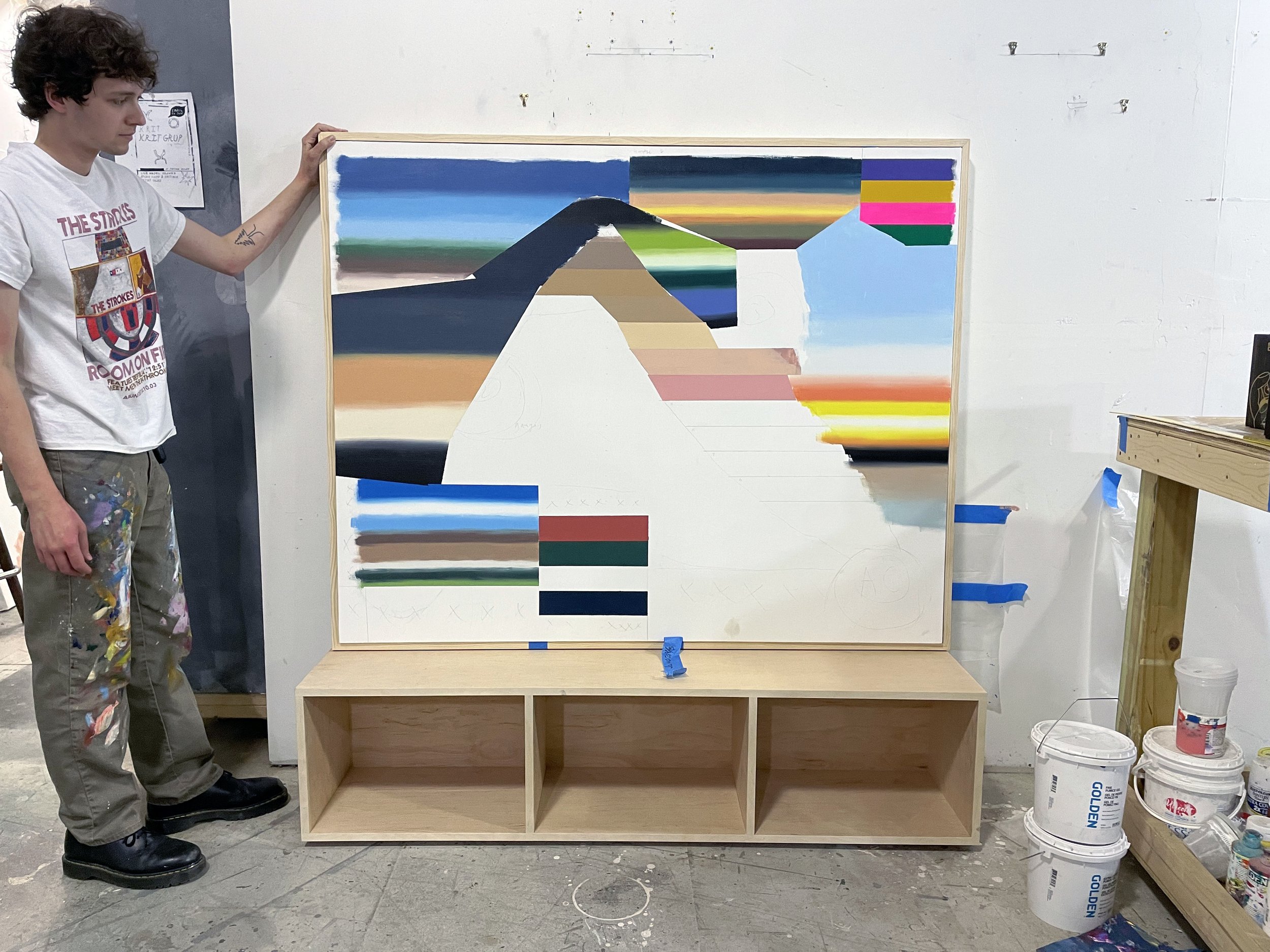
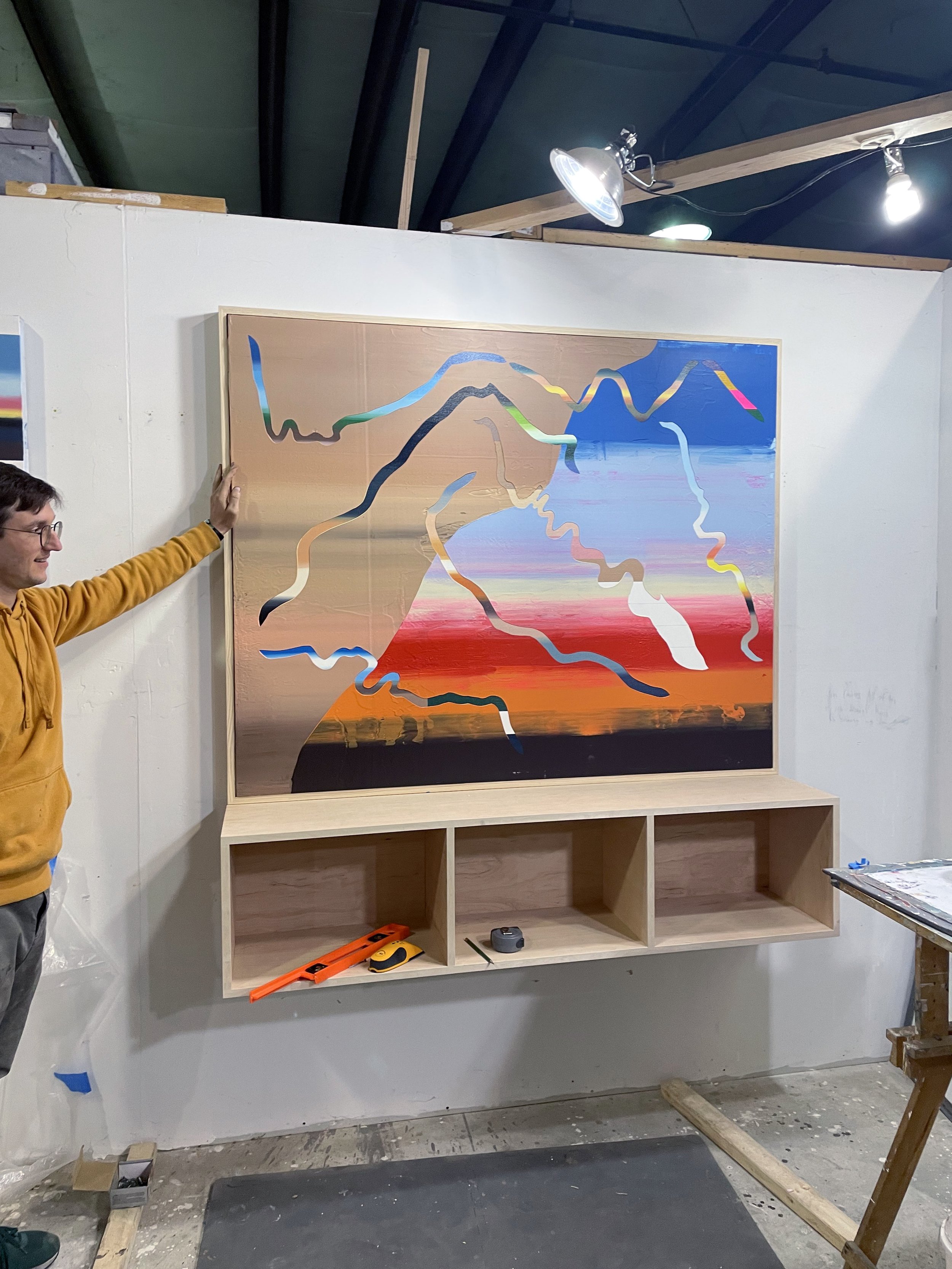
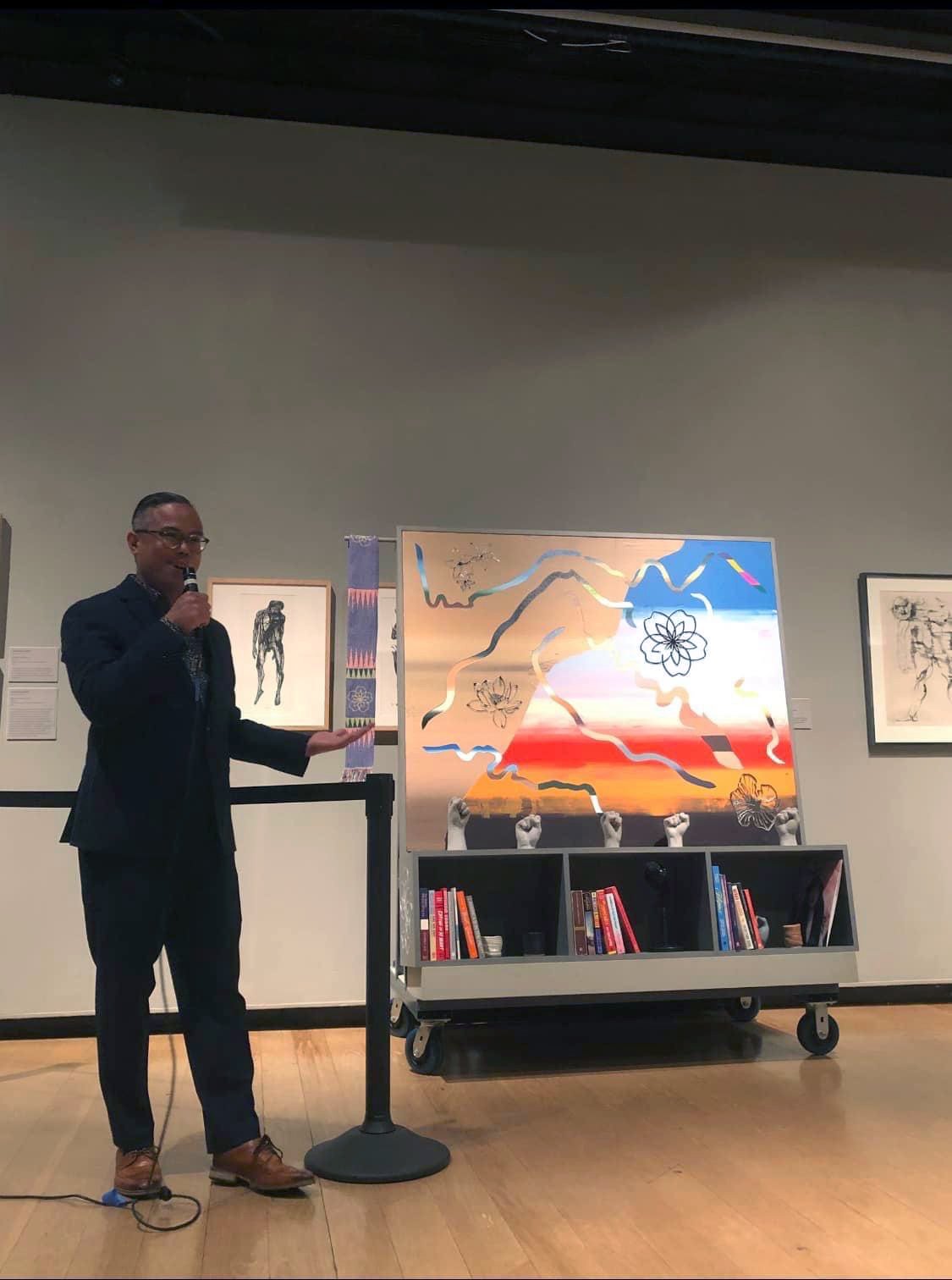
Volumes
64 x 62 x 14 inches, acrylic and pumice medium on canvas over panel, custom wood frame and book case, ethnic studies/AAPI literature, protest fists cast out of plaster, laser cut mirrored acrylic, Khatalampay textile, wabi-sabi ceramic cups, karaoke mic, mic stand, and Thao & the Get Down Stay Down vinyl record, 2022
On the surface of the canvas, there are incisions in the shapes the James River and rivers from different geographic areas of Asia: Yangtze, Mekong, Pasig, Indus, and Ganges. Laser cut, acrylic mirrors of contour line drawings of hibiscus, lotus, and jasmine flowers are bonded to the surface of the painting. Also made out of laser cut mirrored acrylic is the Asian Centennial flower (flower designed by Melissa Payne) bonded to the surface of the painting and to the sides of the book case. The obvious effect of the mirrors is reflection, the ability of the viewer to actually see themselves in the piece is integral to the experience. This mixed-media piece shows the book case as a site of resistance and includes important ethnic studies and AAPI literature including Strangers from a Different Shore: A History of Asian Americans by Ronald Takaki, The Wretched of the Earth by Frantz Fanon, Orientalism by Edward Said, America is not the Heart by Elaine Castillo, and Minor Feelings by Cathy Park Hong. I thought about what brings the APM community together at W&M. One of the thing that unites us all is the commitment to learning and creating new knowledge. I casted the raised fists of W&M AAPI student leaders using alginate and tinted plaster. In the book case, there are wabi-sabi ceramic teacups I created, reflecting the Japanese aesthetic sensibility of beauty thru imperfection.
Special shout out to Andrew Mazzella (VCU BFA Painting and Printmaking ‘23), Prof. Matt Brett, Anthony D’Angelo (VCUarts AFO Resource Lab Tech), and Prof. Will Connally for assistance in fabricating this piece.
Unveiled at the Asian Centennial Gala on April 30, 2022. Acquired by William & Mary, April 2022
Khatalampay
Honoring Your Journey: The Story and Meaning of the Khatalampay
by Francis Tanglao Aguas
Co-Chair of the Asian Centennial, Director of Global Studies, Professor of Asian & Pacific Islander American Studies and TheaterThe creation of a commencement scarf or stole for Asian, Pacific, Middle Eastern/South West Asian students and their allies and advocates as a faculty-student project with Jamelah Jacob '21, Patrick Canteros '20, Shenè Owens (Associate Director of the Center for Student Diversity), and myself began in 2018-19.
Like the diverse Asian scarves of honor that inspired it, the Khatalampay salutes the graduating seniors and bids them a successful, safe, and happy journey from William & Mary, while evoking and amplifying values deeply embedded in its symbolism. Framing the Asian Centennial flower, purple was selected by students to represent deeper self-knowledge, wisdom and creativity. The Khatalampay's focal point is the Asian Centennial flower, which harkens to the various flowers from Asia--distinctly designed like a steganograph, so that each viewer interprets the various flowers according to their own experiences and positionality, just like the seeds that were cultivated and nourished to flowering.
Professor Jamora chose triangles to simulate active movement, much like the activism and leadership of W&M's APM student body. Triangles in W&M's green and gold, frame the Asian Centennial flower, but direct the eye towards the Melanesian pink triangles that are longer, signifying our embrace of our LGBTQIA+ family. The pink triangles point to the purple area, perhaps awaiting more design, representing the graduates' agency to add to the Khatalampay as they will now continue designing their lives after commencement.
It is crucial to note the dedication and perseverance beyond the call of duty that Professor Roberto Jamora contributed to the actualization of the Khatalampay. Not only did he conduct various brainstorming sessions with faculty, alumni, and students or conduct design polls for five distinct designs, he personally went to the fabricator in Asheville, North Carolina to assure the successful manufacturing of the Khatalampay. William & Mary could not have asked for a more dedicated and committed Asian Centennial Distinguished Fine Arts Fellow to steward the creation of this symbol for William and Mary.
Etymology of Khatalampay
In consultation with Professor Stephen Sheehi, and conducting research on the various scarving of honor traditions in Asia, Professor Francis Tanglao Aguas endeavored to create a name for W&M's APIM stole designed by Professor Roberto Jamora. Almost every sound or syllable of Khatalampay is a component of multiple scarf traditions, including the following:KHA: Khata (Tibetan), Khanduva (Telugu, Indian), Khada (Nepalese), Khăn Quàng (Vietnamese). Hatta (Palestinian, Arabic, South West Asia)
TA: In addition to being the second syllable of Khata and Hatta, the syllable TA harkens to Lungta, the term for Tibetan prayer flags. Lungta was originally written in Tibetan as kLung-rta and later as rLung-rta, meaning Air-horse, symbolizing the carrier of fortune and healthy well-being.
LAMPAY: Selampai (Malaysian, Indonesian), Alampay (Filipino)
Designers:
Asian Centennial flower: Melissa Payne, Chamorro American artist, 2021. The design evolved from the APIA Lotus, designed by Caroline Kim '15.Roberto Jamora designed the Khatalampay stole or scarf that is being donned for the first time during Commencement 2022.
Steganography is the art of hiding a secret message within a normal message. This is used to transfer some secret message to another person; with this technique, no one else in between will know the secret message you wanted to convey. (https://resources.infosecinstitute.com/topic/steganography-and-tools-to-perform-steganography/)
Steganography: the art or practice of concealing a message, image, or file within another message, image, or file. (Webster.)



